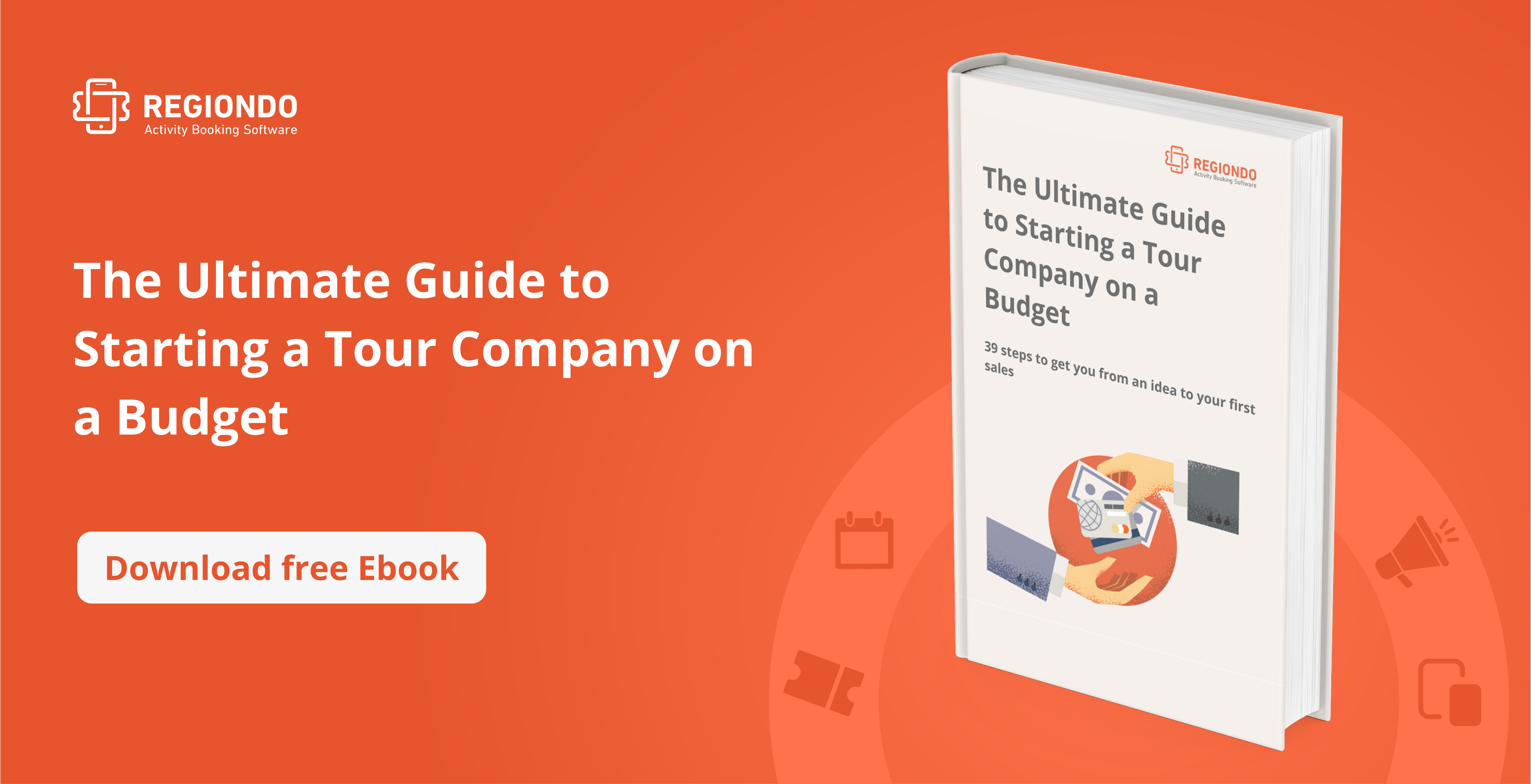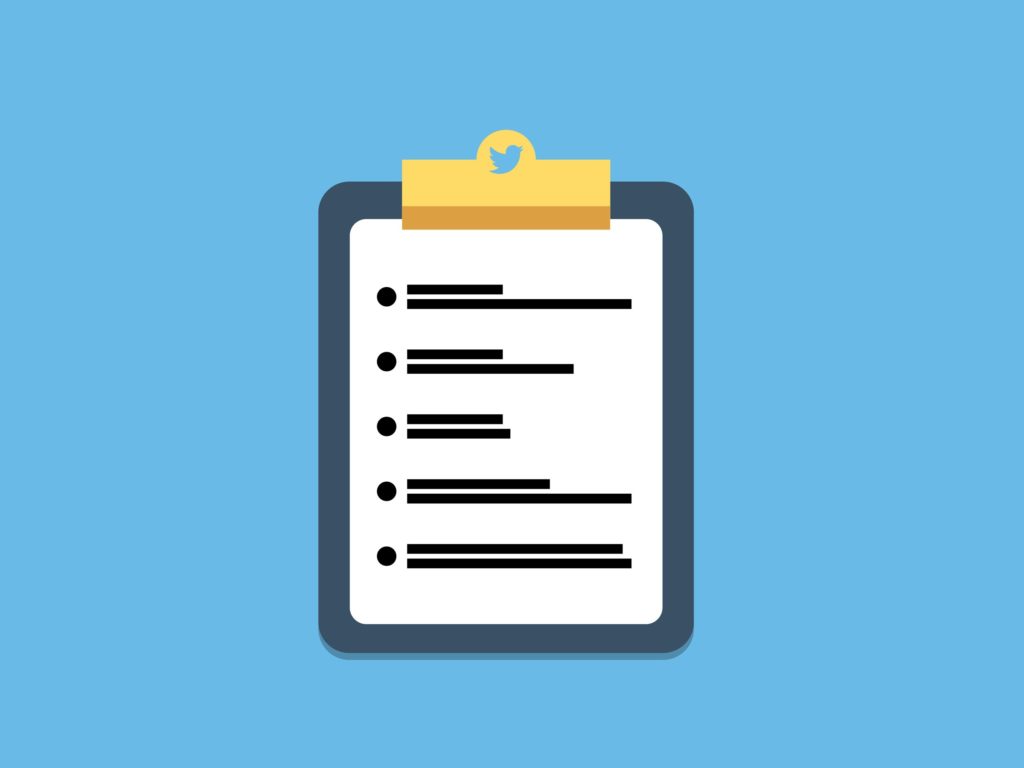Starting a tour company is tough work.
There are many steps involved and it’s important to sequence them in the right order. Otherwise, you risk losing money and time working on the wrong things.
To make it easier, we created this article to guide you through the process of starting a tour company.
Among other things, you’ll find what are the crucial first steps to start a tour company off the ground. You’ll find ways to test your ideas without spending lots of money up front and get early sales before you even launch your business.
You’ll also find tips for designing your tour and positioning yourself in the market so that you have a clear differentiator from existing competitors.
Lastly, you’ll gain an understanding of how to market and grow your tour company so that you have a solid basis for success.
Ready? Let’s go.
This is a long post. Get a PDF version by clicking on the image below so you can save it for review later.
How to start a tour company: Before you start
Before going further, you need the most important ingredients for starting a tour company – skills and passion.
Just kidding.
You really don’t need skills and passion at the beginning because you can acquire these as you go along.
But you do need to make a commitment.
Make a commitment to yourself
Starting a tour business is like everything else in life that’s worth pursuing – you’ll get out of it whatever you put in it. So it’s best to approach the whole venture with a long-term mindset. It’s hard to get started and it won’t get easier over time. Before even starting, make sure you’re truly committed to spending days, months and years on growing this venture.
Now, on to the more practical stuff.
Check the requirements
The first thing you’ll want to do is check the requirements with your local tour body. There may be specific health and safety regulations, depending on your city and the type of tour you want to start. For the most part, these should be relatively easy to fulfill but in some cases, you might have to take a special course to start trading legally.
If you find that it takes time to obtain the necessary documents, skip to the part about registering your business and take care of that first. This way, you can do all the work around designing your tour while waiting for the registration documents.
Designing your tour
So now you’ve made a commitment that you’re in it for the long run.
You’ve also checked the regulations with your local tourism body and you have a good idea of what’s to come from a legal standpoint.
That’s all you need to go forward and design your tour – including how you will make money and stand out from the competition.
Choose your target market

If you’re sure you can meet all requirements of starting a tour company and you’re in it for the long run, it’s time to do a little market research.
The most important thing to do at the beginning is to choose your market and niche down. That’s because you likely have limited resources and you don’t want to waste them on activities that won’t get your results. To get results, you need to know who you’re targeting, what your potential customers need, and how they acquire information.
So how do you choose your niche?
There are many ways to go about this and below are just a few best practices:
1) Scratching your own itch
A tried and tested method is to build a tour for people like yourself. This means people that are in your age group, share your interests and, ideally, you know a lot of them.
Taking this approach is great because it will be easier for you to “get in the shoes” of your customers.
2) Take advantage of a market trend
Is there a factor that makes targeting one group a really good idea?
Perhaps a new law reduced travel restrictions for another nation and you expect many people will come and visit?
Or maybe there’s a new initiative in your city that’s likely to attract many new visitors?
It’s important to stay on top of local and international tourism trends because you might spot a pattern before everyone else and take advantage of it.
3) Look at your competition before starting a tour company
Is there a gap in the market that you’ve spotted? Something that’s missing in the region for you personally, that you’d like to introduce? Check out Viator or GetYourGuide to make sure it’s really missing.
If you’re lucky, all 3 factors above will work in your favor. You should ideally be in a growing market that you understand and is underserved by existing competitors.
Develop your Value Proposition
Once you’ve chosen a target market, it’s time to figure out what type of tour you’re going to sell them and why they will buy it.
How do you go about that?
A good approach is to list out your ideal customer’s pains and gains.
How can you help them solve their problems or reach their goals with your tour? Answer this question to figure out what type of tour you can offer and how to tailor it for your customers.
For more information on developing an effective value proposition, check out our article on how to conduct market research for tours and activities.
Identify your Unique Selling Point (USP)
The USP or Unique Selling Point is the answer to the following question: why would anyone choose you over competitors?
Getting your USP right is important because you’ll need to communicate it often and everywhere you can.
Is your tour the only one of its sort in your city? Are you giving more value at the same price? Increasing the duration (though not always), giving out freebies or adding a tour theme are all good examples of differentiation.
Devise a go-to-market strategy on how to start a tour company
So you know who you’re going to target and what you’re going to offer them. Now it’s time to think about how you’re going to reach your audience in a cost-effective way.
Below are some of the best channels for selling tours (you can click on each to read more):
- Your website
- Online Travel Agencies (OTAs)
- Social Media (Facebook, Instagram, Pinterest, YouTube…)
- Destination Management Organizations (DMOs)
- Review sites like TripAdvisor
We’ll speak more about these channels later. For now, think about how your target audience acquires information so you have a rough idea of how you’re going to reach them.
Set your price

Pricing is a tough subject to master.
But it’s important to get it right because it directly affects your revenue, the perceived value of your tour and, most importantly, the type of customers you attract.
The most important thing is to avoid underpricing. Just because you’re starting out doesn’t mean you should be lower cost. If you compete on price, it’s going to be hard to get the initial profit you need to grow and provide a better service.
Think about it this way – the higher the price, the more value you can provide to your customers.
In fact, you can have several tiers of pricing to control demand and allow people different types of experiences.
That said, it’s worth checking out competitors so you have a rough guideline of the average price others are charging.
Identify the resources you’ll need
Now it’s time to think about what you’ll need in order to deliver your tour.
It’s good to have an idea of the required resources so you can estimate your costs and avoid unexpected surprises.
These could be things like special equipment, assets, and employees. Or maybe you need to find a great office location?
Whatever it is, keep that in mind so you can budget for it later.
Visualize a day running the tour
By now you should have a good idea of how your tour is going to function.
In order to clarify what it means to do this, try and visualize a normal day running the tour.
- When do you wake up?
- What do you do first in the morning?
- How does your workday go by?
- How does it end?
Visualizing your day will help you spot any gaps or things you’ve missed. You’ll also get a rough idea of the more repetitive and mundane tasks you’ll have to do – hopefully, this will not put you off!
Make a list of people who can help you

We’ve covered some ground now and you’re probably thinking “that’s a lot of work”!
And it is.
Once you have a rough idea of what you’ll need and the ongoing activities, think about who can help you with starting and running the tour.
Do you know people who can provide you with any resources, guidance or support? Or maybe there are specific organizations that you can partner with or even pay to massively increase your chances of success?
Think about this early and you’re likely to find that things are much more realistic than you thought at the beginning.
Estimate your costs
As with any business, you also need to keep an eye on the costs.
After putting in the work in the thought exercises above, you should be able to estimate some rough number – both a monthly overhead and the cost of starting up. Try and make a few notes right now.
Ready?
Now double the number you got for both the upfront and monthly costs.
The reason for this is to avoid “optimism bias” – we are wired to underestimate the likelihood of things going wrong in the future.
So stay on the safe side and, as they say, “expect the unexpected”.
Testing the waters

Source: TNW
Most articles online will suggest you register a company, find an accountant, build a content-heavy website and all sorts of useless things – before even knowing if people want your tour.
Here, we take a slightly different approach.
While you need to get the formalities right (like your license, registration, and insurance – but more on this later), you should try and collect as much information as possible to validate your assumptions before spending lots of time, effort and money.
Here, we’ll look at the first steps you can take to prepare your tour for success and get online as quickly and cheaply as possible.
Choose a name for your tour
This should embody your core differentiator and make clear what you do. Here are a few good examples:
All 3 examples give you an idea of what to expect – but they are not obvious.
This is also a good time to check if there’s a suitable domain name for your business – later on, you’ll need it for your website. Plug your ideas into this domain name generator to get some killer suggestions.
*Please note: We don’t support drinking craft beer before getting on your bicycle.
Create a logo
Ok, so you have an idea of your tour design, pricing, and USP. Now it’s time to get to the visuals.
The first thing to think about is a basic logo to use across various sales channels – like your website and social media.
You can create a free logo here or hire someone to do it for you on places like 99designs.
Try to get the colors right and make it represent what you stand for. But don’t worry too much about it – the logo is important but not the main reason people will come and buy from you.
Take some photos and videos

Source: GofreeDownload
Yes, I know you still haven’t launched your tour and don’t have any photos of happy people with stunning views behind them.
But that’s no reason to exclude visuals from your marketing materials.
Go around and take some photos in your city. Or record a video of the equipment you’ll use – even before you have it. This will come in handy when you start building your online presence (we’re getting there).
Decide on your opening hours and launch date
What? Opening hours?
Yes, you’ll need to present a fully operational page in a moment that assures people the tour will go live.
This is also the time to decide on your official launch date so you can start generating some buzz ahead of that.
Make sure to stay on the safe side and expect that there will be delays. There’s no need to rush (unless you have a really good reason for it).
As a rule of thumb, give yourself at least 30 days for promotion ahead of the launch date.
Set up your contact details
You’re about to start interacting with a lot of people – now’s the time to set up your business contact number and email address.
No need to use a website domain name for your email or setting up a long-term contract for a mobile phone. People don’t really care about that.
A simple [your_tour_name]@email.com and a prepaid SIM card should be enough at this point.
Create a Facebook page

Source: Sprout Social
You were probably wondering why you need to do all these stuff above.
Well, the reason is your Facebook page (or in rare situations – some other social media where your target audience hangs out).
A Facebook page is one of the fastest ways to get online and gain the capacity to reach many people.
It can host all the information people care about when booking your tour – including pricing, address, reviews and so on. They can even get in touch with you directly via chat.
Best of all, your friends and family can share it and generate awareness.
There’s only one setback – you need a way to capture people’s email addresses to tell them about your launch date. That’s where your website comes in.
Create a basic website
Your website should be the primary online channel you use for acquiring new customers. The reason is you have full control over your website which is not always true when using other online channels. You can control things like the branding and messaging, but more importantly – you will not pay any commission fees to resellers.
At this point, you don’t need an elaborate website with all the bells and whistles. You just need a simple page with the following elements:
Attention:
Create an exciting headline that captivates your visitors once they arrive at your website.
Interest:
Describe the key benefit of your tour, making sure to mention who it’s best suited for.
Desire:
Highlight the best parts of your tour using both words and images to instill a desire to act in your visitors.
Action:
Provide a clear call to action to submit an email address so you can save them a spot for launch date (or directly purchase your tour or activity once you have a booking system in place).
Like with the logo, avoid spending too much time on this and make sure it’s just out there. There are many cheap options for building a basic website such as WordPress or Drupal.
You can learn how to build your own website with built-in booking system here.
Once you set up your website, take a minute to check its performance in terms of SEO, page speed and keywords. You can use this free SEO grader tool to perform the test.
Networking
So, you’re officially online and well on your way to launching a tour business. Now it’s time to get involved in the industry and talk to the most relevant people you can find.
Talk to people in the industry
Talking to tour guides and operators that have done what you want to do is probably the fastest way to a successful start. Ask for advice, ask for their stories and learn from their successes and failures.
Just search for tours that don’t directly compete with you and get in touch with one or more of the tour guides. Explain that you’re just starting out and that you want to meet other people in the field to bounce ideas and experience off each other.
Follow the influencers
There are many influencers in the tour industry that you can turn to.
Even if you can’t directly talk to them, you can follow their blogs and social channels to stay in touch with what’s going on in the tour industry.
Of course, keep a close eye on the Regiondo blog too – we cover the most important aspects of starting and running a leisure business with topics ranging from sales and marketing to leadership and important tourism events.
Get involved in events and meetups

Source: Local Guides Connect
Another easy way to develop the network you need is to join existing events, conferences and regular meetups near you. These should be related to the industry but don’t necessarily have to be just for tours.
A lot of groups exist where business owners can share ideas and experience to get more profitable and grow. These are also people that can refer you more business and, of course, buy from you.
Just go to Meetup.com or your local DMO too see if there are any good events happening nearby.
Stay active in these fields and you’re bound to get a lot of benefits and have fun along the way – while meeting new people and acquiring friends.
Taking care of the legal stuff
As you can see, your goal when starting out should be to generate bookings as quickly as possible.
However, there are a few things to take care of so you can trade legally. It’s best to do this early to avoid potential bottlenecks later down the road.
Register your business
The first thing you need to do is to register your business name so you can legally start making sales. The name doesn’t have to be the same as your tour name so you can use whatever makes sense for your business structure and future plans.
Just go to your local business registrar office or call them up on the phone to save time (if available).
Open a business bank account
There are many ways to get paid, but you always need a place where the money ultimate goes. So opening a business account is one of the first things you need to do. This will let you keep track of expenses while having a place to take payments.
Get a tour operator license
Once your business is officially registered, it’s time to obtain your tour operator license or (or equivalent in your country). The process for this should be detailed in your local government’s or tourism body website.
Set up liability insurance
Liability insurance will protect you in case something goes wrong and a guest or employee has an accident. You can also cover any potential legal costs. Make sure to go online and search for quotes from local insurance companies.
Open for business
Well, not exactly. While your business is not fully operational yet, there’s no reason why you’d turn down bookings.
In fact, you have every reason to start getting pre-sales and booking your tour in advance. Not only is this the best way to validate your ideas, but it’s also great to fund your startup costs for launch day.
Start taking online bookings
Ok, now that your website is up and running, you’ll need a way to get bookings through it.
To do that, we recommend choosing a booking software like Regiondo that will take care of the hard work for you. You can book a live demo with Regiondo experts who will guide you through the platform and help you start getting online bookings.
Once you have your website and booking system implemented, you can manage all your sales in one place using your Regiondo dashboard.
Your website visitors can also see a live booking calendar on your website and you’ll be able to manage multiple sales channels – like Viator and GetYourGuide among others.
Register with Online Travel Agencies (OTAs)
Once you’re ready to take bookings, online travel agencies can be the best place for getting early sales. These sites have grown tremendously in recent years. They often list thousands of tours and activities and sell them to their visitors in exchange for a commission.
You can learn more about the top online travel agencies in our dedicated post on the topic.
Get on review platforms
Eventually, reviews will be a key part of your tour business and it’s never too early to start thinking about building your presence on review platforms.
The biggest name here is TripAdvisor so we have a whole article on building your TripAdvisor ranking.
As a best practice, try to build your reviews in a single platform, preferably TripAdvisor, so that you don’t spread your attention across multiple platforms. But there are other important places too – like Google, Yelp, and Facebook. If people prefer to use these platforms, you should give them a way to leave a review there as well.
Sign up for the relevant social media platforms

Hopefully, you already have some social media presence, such as a Facebook page.
But depending on who you target, you might also look into other channels.
For example, younger people tend to spend more time on Instagram and Snapchat.
And Pinterest is one of the most visual places to hang around on the web – ideal to post the photos you’ve taken in the steps above.
YouTube is the king of video – and it’s a great channel for many people to drive traffic to their website.
Twitter can be a good option too – especially if your target market hangs around there. Twitter’s users are from a varying background but you will often find influencers there – who can help you grow your business tremendously.
Finally, despite its status as a professional network, Linkedin can be a good channel for selling to businesses. If you plan to introduce teambuilding offers and group events for companies, this social network can be a good option.
Tell your story
Now it’s time to add a more personal touch to the places where you have a presence.
Like the USP, your story will do much of the selling for you.
- Why did you decide to start this tour?
- How did you come up with the idea?
- What problems did you encounter?
- Who was there to help you?
These are just some questions that help you define your brand story.
You may think that there’s nothing special to your tour – but I encourage you to sit down and think deeply about this.
Were you fed up with your 9-5 job? Or maybe you’ve always been fascinated with the subject of your tour? Did you grow up in the city, knowing all of its ins and outs? Or maybe you stumbled upon the location and fell in love with it?
Whatever the background, you surely have a good reason to be where you are. If you get to a point where you actually launch a tour, you will have something interesting to say about it. And people like interesting stuff. It’s why they buy tours and activities. And it’s why young people today prefer spending on experiences rather than things.
Do email marketing

Source: Depositphotos
Hopefully, your website is working well and generating a consistent flow of emails by now.
Email marketing is one of the best ways to reduce reliance on first-time customers.
It’s also a great way to generate more online reviews by contacting people after an event.
At this early stage, email will help you update customers and potential customers when the tour becomes available.
Advertise (if you can afford it)
Advertising is not crucial before launching but could help if you have the budget for it.
Depending on your target market, you could go for offline advertising or online advertising. And in some cases – both.
You might be tempted to go for modern approaches like Facebook ads or Google ads, however, traditional print media can also be a good choice.
As more people get their news and info online, you can strike some pretty good deals with local magazines or newspapers.
Another option is sponsoring travel bloggers and other influencers who can promote your upcoming tour in their content.
And if you don’t want to spend cash on advertising, check out our post with 10 ways to get free advertising for tours and activities.
Set up analytics

To be frank, sophisticated stats are not what you want to spend your time on so early.
However, it’s good to have a basic idea of where bookings are coming from (and hopefully you’ll get enough bookings to justify it).
Knowing this will guide you about where you should spend time later on when growing your tour.
Is your website working well? What about Facebook? And maybe some of the OTAs are kicking in…
These are things you need to keep an eye on so you spend your time in the most effective way.
The important thing right now is to keep things simple.
Track a few KPIs and make sure you always have a specific question you want to answer before getting buried in data.
You can learn more about this topic in our post about Google analytics.
Do a test run
If you can, get some friends together and run the tour with them. This will help you spot potential bottlenecks ahead of launch day so you are prepared to tackle them.
You will also be able to make any changes to the tour based on your guest’s reactions and feedback.
How to start a tour company in case you can’t do everything yourself
In some cases, you might need staff or special equipment to start operations. This section is here for a reason – you will ideally confirm all your ideas and make sure there is high demand for your tour before investing serious resources.
But if needed, here are some tips on finding the right suppliers and hiring your first employees.
Find suppliers (and possibly funding)
Do you need some special equipment? Any assets that are crucial to the operation?
There are 2 aspects here – one is sourcing them and the other is getting the money to fund your purchases.
But this is a post about starting a tour company on a tight budget. If you don’t have all the cash upfront, check out our article on business funding so you can take care of this too.
For supplying the assets, it’s usually best to source locally.
You may be tempted to order from China or other places where you can get a cheaper offer.
But this way you increase the likelihood of problems and complications.
Despite major platforms like Alibaba that make it easier to trade wholesale, it can still be difficult to acquire assets this way, especially if you don’t speak the language.
It’s also much more difficult to get support later.
And in many cases, you will be surprised that there is not that big of a difference between wholesale prices. So sourcing local is a good step if you can afford it.
Another tip here is to start small.
Avoid ordering big batches but rather start with the minimum needed to make your tour a reality. Try and get it on credit and form a deal where it’s possible for you to return the equipment if you don’t manage to take off as quickly as you’d hoped for.
Hire staff
It’s good to do the job yourself first – at least for a little while. This will help you understand the processes and the type of people you need to hire.
But sometimes, you will need to hire from the get-go.
Needless to say, you should aim to get the best people you can. Whether it’s seasoned professionals or people with lots of potential whom you can train.
This is not the place for making compromises. Who you hire will have a great impact on your success or failure.
This is obviously a big topic and there’s no way to capture it here. If there’s one thing to take away, it’s this:
Find great people and treat them well – that’s one good recipe if you need staff early on.
Launching and beyond

Source: Pexels
The day you and the entire city have been waiting for…
Make it special
Ok, so you’ve designed and tested a great tour, people know about you and you’re confident things will go right. Or maybe you’re not – it doesn’t matter because it’s time to launch officially!
Get everyone you can – family, friends, family friends, friends of friends, the media – everyone should know about it.
If you used all of the tactics above, you might find that you’re booked well in advance!
Provide world-class customer service
Once you start getting some customers, make sure you treat them well. That’s the most important thing from now on – creating passionate, happy customers and treating the people around you well.
By giving people great service, you reduce the reliance on first-time visits and so you can build a sustainable business where you don’t have to grind all the time.
Sure, the odd bad review will come along, but there are good ways to deal with negative reviews.
The important thing is to be willing to sacrifice the short-term for the long run. You may have to swallow some pride and give a few refunds at first. You may have to sell some promotions that are not perfect revenue-wise. But it will pay off because people will spread the word and come back again and again.
Start managing for growth
Well, you’re hopefully in a pretty good spot right now. But the hard work has just started.
You will face many difficult choices from now on – bad economy, good economy, expanding and reducing sales. Plan and research every step carefully – but don’t overthink it. It’s a tough balance to accomplish.
Use your vision as a guide and you will make decisions easier. Go back to your brand story and the reason why you’re staring. Keep this in mind and use it when you have to make a hard decision.
Whatever happens, make sure you have fun and stay true to your vision.
Conclusion
Well, that’s one huge topic, isn’t it? Of course, there’s no way to capture everything you need to know in one article. It could well be a subject of a book or even many books.
But we hope this article will act as both a handbook and an inspiration for you to act and start your tour company.
The crucial things to remember are as follows:
- Do your research
- Test the waters so you don’t spend cash up front
- Start marketing early
- Analyze the best channels for you
- Start small and don’t buy expensive resources
- Hire after you’ve done the job yourself
- Expand carefully, staying true to yourself and your values
So there you have it – that’s how to start a tour company without breaking the bank.
This is a long post. Get a PDF version by clicking on the image below so you can save it for review later.
If you want to learn more about the topic, check out these articles:



